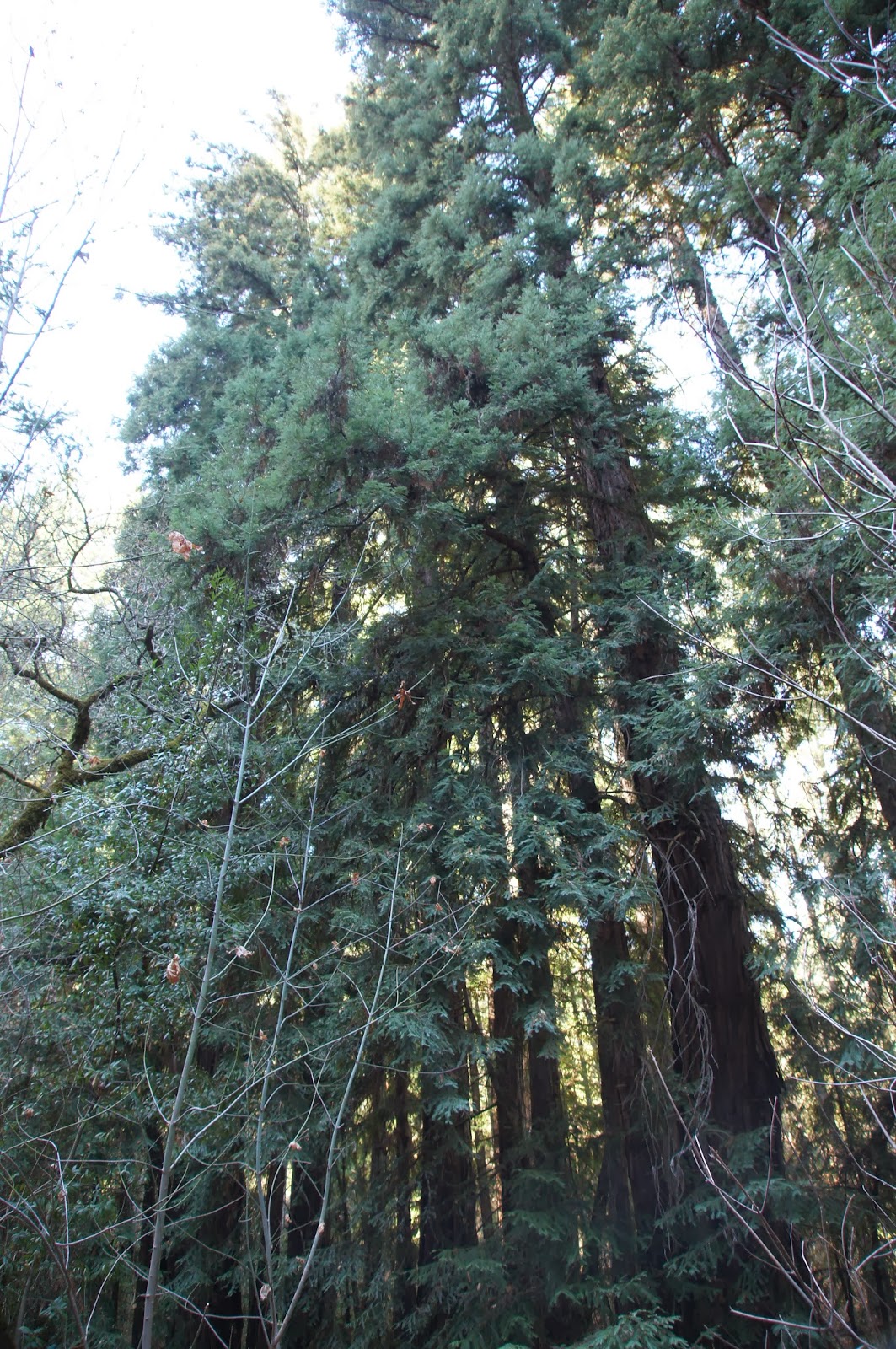Place: Bothe-Napa Valley State Park, Calistoga, California
Coordinates: 38.55120, -122.51997
Length: About 5 miles
Difficulty: moderate to strenuous
It being so soon after a long winter vacation, we didn't plan any big trip for the Martin Luther King's Day weekend. A one day hike was enough for us. I have planned to take my family to Angel Island so we packed up food and water for the whole day and we arrived on time to the Oakland ferry just to discover that it doesn't run to Angel Island until spring.
We stood at the depot with our full backpacks and wondered where to go next.
I was recently reminded of cedar waxwings and I recalled that the first time I ever saw these beautiful birds was at Bothe-Napa State Park, on a persimmon tree right by the visitor center. I immediately suggested that we go there.
It's been a few years since we've been there last. The chikas were very young and we didn't walk much. Now we had the opportunity to do a proper hike there.
The park is a bout 6 miles south of Calistoga on Hy 29 and it took us about an hour to drive there from Oakland. When we got there we found no attendant at the gate, a closed visitor center, and no brochures of maps available. Having gone there on an impulse we did not have the map with us and I wondered how far out we should go without one. Then I spotted a ranger coming to empty the self-registration stand and I approached him, asking for the park's brochure. He handed me a flyer with the map of the campground and the marking of the trailheads, which did not satisfy me. I kept asking questions about different trails and eventually he pulled his one copy of the park brochure with a detailed trail map from his vehicle and gave it to me.
 |
| American Robin, near the visitor center |
The Ritchey Creek, along which we hiked most of the time, originates at a spring and has a year-round flow. It was nice to see running water in January of the worse drought year California is experiencing in many years.
 |
| Ritchey Creek |
Occasionally too, the sun rays broke through the canopy and lit up patches of the forest. At that point I got warm enough to pull my hands out of my sleeves and turn on my camera. As always: the pretty bark of a madrone tree made the perfect photo subject.
 |
| California Madrone (Arbutus menziesii) |
 |
| Redwood (Sequoia sempervirens) |
At some point the elder chika announced that she saw a cat on that trail, across the creek. I lifted my binoculars to my eyes and couldn't believe our luck: for the second time in two months I was looking at a bobcat. And this one, too, was nonchalant. Walking to and fro, aware of our presence but not caring all that much. Not enough to run away, anyways.
 |
| Humans? Bah! |
And the cat turned its face to the camera :-)
 |
| Seriously? A whistle? What am I, a dog? |
The Redwood Trail ands at the creek. We crossed on the rocks and met with the Ritchey Canyon trail. Then we had to decide weather to loop back to the car or go on forward. At that point I was really glad that I got the map from the ranger because without knowing where the trail was headed we would have certainly gone back at that point.
 |
| The end of Redwood Trail |
This was the only true sunny spot in our entire hike. And it isn't a convenient stopping place so we didn't stay there for long. Just enough to notice this pretty hummingbird, enjoying the warmth:
 |
| Anna's Hummingbird |
Despite the drought, the forest air felt cook damp. Many of the downed wood had fungi growing on them.
The fungi, an essential component of the forest ecosystem, decompose dead organism and release the nutrients back into the ground to be used for new growth. The fungus lives its life underground or within the dead wood, out of sight. Unless, of course, it's fruiting.
 |
| Fungi fruiting bodies growing out of a felled tree. |
 |
| Insideout Flower (Vancouveria hexandra) |
 |
| Fox Sparrow (Sooty) |
 |
| At the Hitchcock Site |
 |
| Creek and Redwoods and what turned out to be a very nice day. |
Many thanks to members of the California Native Plants Society for their help in identifying plants!



What a great luck, to see two bobcats.
ReplyDeleteWhen you go out that much, you increase your chances.
Thanks!
It is lucky indeed! (Or maybe it is the draught that makes them be bolder when looking for food and drink, who knows?) I haven't had such luck in previous years, and I do hike a lot.
Deleteredwoods, and madrones - and topping it all with a bobcat?! wonderful!!!!
ReplyDeleteWe were very fortunate to see the bobcat. The chance of seeing even one is not big, and seeing two within 3 months is quite outstanding. I think the long draught we've had might have something to do with it.
DeleteWow! The bobcat is wonderful. You're lucky :-)
ReplyDeleteWe were very lucky. It is very rare to see these shy animals out like that in nature.
Delete